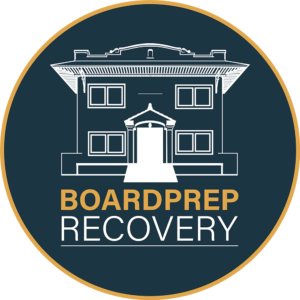to create your personalized wellbeing plan!
Of all the careers in the healthcare field that could present risks for getting addicted to drugs, one of those at the top-tier would have to be a pharmacist. Even the job description for a pharmacist points to this conclusion:
“Responsible for overseeing the distribution of medications to people with various physical or mental health conditions.”[1]
And research studies back this up: Approximately one in seven pharmacists will become addicted during their professional careers.[2] Given these statistics, one of the key considerations for pharmacists who find themselves struggling with a substance use disorder (a.k.a. chemical dependency or addiction), what type of treatment will be most effective to help them recover? And perhaps just as significant—at least to many—is the question of determining reentry requirements. Meaning, what specific action steps must necessarily be taken by a pharmacist with a substance use disorder so as not to lose his/her license, credentials and job?
The (Unfortunate, But Very Real) Shame Game
To begin understanding what pharmacists are facing, day in and day out, particularly in the context of increased risks for developing a substance use disorder, some important questions need to be answered, including:
- Does the pharmacist understand addiction as a disease state or is addiction perceived as a moral or character issue?
- Do addicted pharmacists feel they are an embarrassment to the profession?
- Do addicted pharmacists believe they can recover from their addiction and can return to the practice of pharmacy?[3]
These questions relate to an issue worthy of any pharmacist’s reflection—even those who are not struggling with substance use or abuse—given their daily job puts them at greater risk than normal of developing a chemical dependency.
For those who do have a chemical dependency, they can explore these questions with support and guidance at addiction treatment programs specifically designed for healthcare professionals. In such programs, the professional shame of addiction—sometimes defined as “a painful emotion caused by consciousness of guilt, shortcoming or impropriety”[4]—can be openly addressed in an atmosphere uniquely set up not to induce or perpetuate shame.
In fact, such programs developed to treat healthcare professionals (including pharmacists, doctors, nurses, etc.) purposely spend time focusing on this issue of professional shame – that’s how important it is. As well, they help the pharmacist develop knowledge and understanding of the disease of addiction and the nature of recovery. The education about these essential subjects, plus deepened understanding and practice of open and honest communication, and acceptance of their disease, are all requisite learning for an addicted pharmacist’s healing and recovery.[5]
Further topics that need addressing in a pharmacist’s addiction treatment include mental health and stress-related illnesses, so they can understand and learn to identify in advance potential relapse triggers. According to Norton et al., “There is evidence that other factors also play a role in developing an addiction and depression problems. These personal and environmental factors include: personal history of trauma (violent, emotional or environmental), high-stress environments (including the pharmacy), obsessive-compulsive traits, the need to be perfect, and the need to be in control.”[6]
PART 2 of this two-part series will delve into relapse issues and prevention strategies provided to pharmacists in treatment, as well as what is required for a pharmacist to be reinstated and return to work.
[1] Pharmacist Job Description [Updated for 2021] (indeed.com)
[2] Comton, W. M., Thomas, Y. F., Stinson, F. S., & Grant, B. F. (2007). Prevalence, correlates, disability, and comorbidity of DSM-IV drug abuse and dependence in the United States: Results from the national epidemiologic survey on alcohol and related conditions. Archives of General Psychiatry, 64(5), 566–76.
[3] impaired-pharmacist.pdf (usaprn.org)
[4] Ibid.
[5] Milenkovich, N. (2013). The impaired pharmacist: Rehabilitation, regaining dignity, and licensure. Mental Health Clinician, 3(6), 313–5.
[6] on, M., Ford, H., & Al-Shatnawi, S. F. (2013). The development of the student pharmacist chemical health scale (SPCHS). Mental Health Clinician, 3(6), 321–6.
